Normally, black or dark coloration inside the mouth is thought of as a bad thing. Our minds automatically jump to rot and decay.
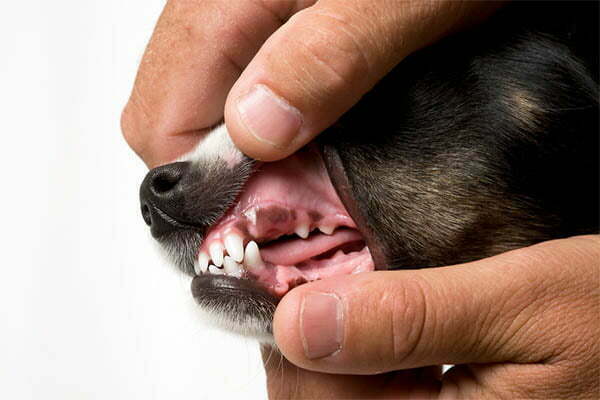
However, for some dogs, a black mouth and black gums are totally natural and healthy. They are simply part of some breeds’ genetics.
Some dogs will have an entirely black mouth, while others will just have spots of black on their gums or tongue. It varies from breed to breed and dog to dog.
The blackness is simply caused by increased pigmentation in the mouth. This is also how darker skin and hair come to be.
In some circumstances, black gums or black patches can be a sign of disease or infection. You should check with a vet if your dog has recently developed black gums or spots. Similarly, raised black spots in the mouth also need to be checked out.
However, for the most part, black mouths are nothing to worry about, especially if your dog is one of the following breeds.
Chow-Chow
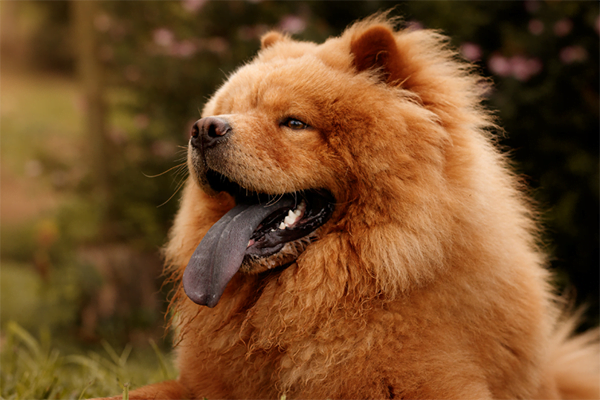
Originally from northern China, Chow-Chow dogs are stout, boxy dogs well known for their double coat, fluffy mane, and blue or black tongues.
Chow-Chows are one of the few dog breeds that have blue tongues. Their gums typically range from a lighter blue color to a dark black.
These dogs are beautiful, loyal, and protective of their owners. They’re not the most active of dogs, preferring to have a cozy snooze than an extended walk!
Breed Group: Non-sporting.
Lifespan: 8-12 years.
AKC Popularity Ranking: 75 out of 197.
Labrador Retrievers
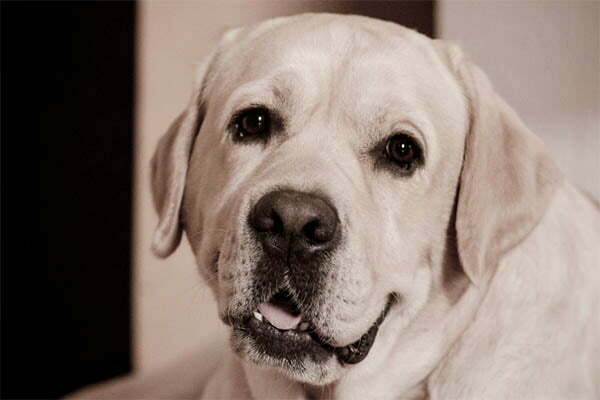
These friendly, loyal, and adorable dogs are America’s favorite! Their goofy, energetic pups just want to be best friends with everybody.
There are three different colored Labradors, black, chocolate, and yellow. Black and yellow labs tend to have black gums, while chocolate labs tend to have pink gums.
Labrador retrievers were originally bred to retrieve ducks or act as gun dogs. Nowadays, they have diversified their portfolio substantially. Not only do labs make excellent retrievers, but they are wonderful therapy dogs, guide dogs, assistance dogs, and police dogs.
Breed Group: Sporting
Lifespan: 10 – 12
AKC Popularity Ranking: 1 out of 197
Rottweiler
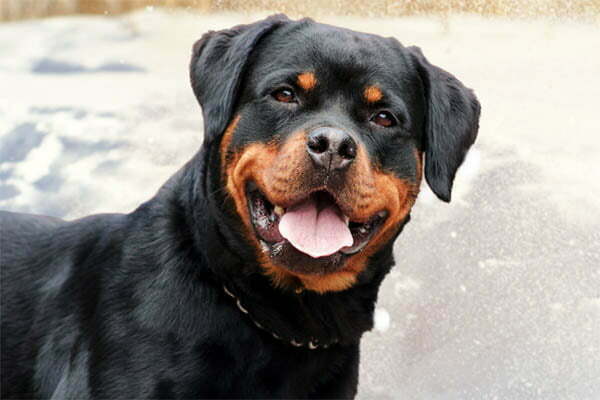
These sturdy, well-muscled dogs were originally bred to herd cattle and pull butcher’s wagons to market. Nowadays, they are typically viewed as guard dogs thanks to their imposing stature and aloof temperaments.
Rottweilers get a bad rep, but the breed is not overly aggressive. In fact, these brutish-looking dogs are actually very playful, incredibly dopey, and adorably cuddly.
Early socialization and training are the best ways to harness the loyal and protective nature of these dogs for good.
The gums are normally a blackish-gray color or spotted black, while the jowls are usually all black to match the nose.
Breed Group: Working
Lifespan: 9 – 10
AKC Popularity Ranking: 8 out of 197
Golden Retriever

Like its Labrador cousin, the golden retriever is an incredibly loyal and intelligent dog. Often used as a guide dog, assistance dog, and therapy dog, the golden retriever excels as a pet, a working dog, and in competition.
Golden retrievers hail from Scotland, where they were first used as gun dogs. Their beautiful, flowing, golden fur hides a denser inner coat that keeps them warm even in cold Scottish locks.
Originally used to retrieve waterfowl, golden retrievers instinctually love the water. Swimming and fetching are in their blood. They are hugely energetic dogs and can swim or fetch for hours on end.
The mouth of a golden retriever is known as a soft mouth. This means that they can grasp and carry items without biting into them. This was bred into them, so they wouldn’t pierce the birds and fowl they collected.
Breed Group: Sporting
Lifespan: 10 – 12 years
AKC Popularity Ranking: 3 of 197
Airedale Terrier
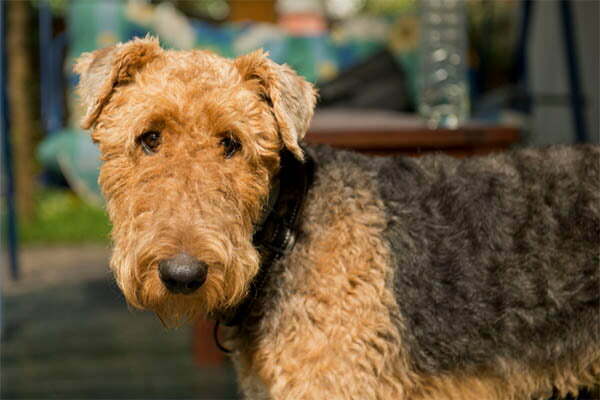
Often called the ‘king of terriers,’ these dogs stand head and shoulders above other terriers at about 23 inches tall.
They were originally bred to catch rats and otters in the Aire Valley in Yorkshire, England. This makes us wonder how big the rats were in Yorkshire!
Airedale terriers have served as war dogs, police dogs, and hunting dogs across Europe and North America. They are also the starting ancestor for a number of other terrier breeds, including the Yorkshire terrier.
These dogs are double-coated, with the topcoat being thicker and coarser than the undercoat. Airedales are considered to be hypoallergenic dogs as they do not shed. This does mean that they require frequent grooming. They also typically have an adorable and distinguished mustache and beard.
Breed Group: Terrier
Lifespan: 11-14
AKC Popularity Ranking: 60 of 197
Curly-Coated Retriever
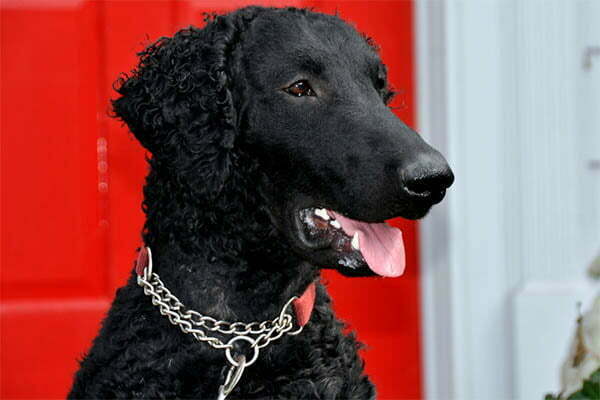
This retriever stands out from the rest thanks to its dense, curly coat and its height. It is the largest of all retrievers and was originally bred in England.
The curly is the oldest recognized retriever breed, along with the flat-coated retriever. It goes back as far as 1860.
The tightly curled fur of a retriever is designed to repel water, burrs, and damage from brush and bushes. These dogs do not have an undercoat as the curls keep them dry and warm.
Curly-coated retrievers can be black or liver-colored. The jowls and gums are normally solid black or spotted black, but the tongue will be pink.
Known as the thinking person’s retriever, curly-coated retrievers are incredibly smart, making them wonderful obedience dogs. They also love swimming and are hugely energetic. They do well in agility and flyball thanks to their athleticism.
Breed Group: Sporting
Lifespan: 10 – 12
AKC Popularity Ranking: 162 of 197
Pomeranian
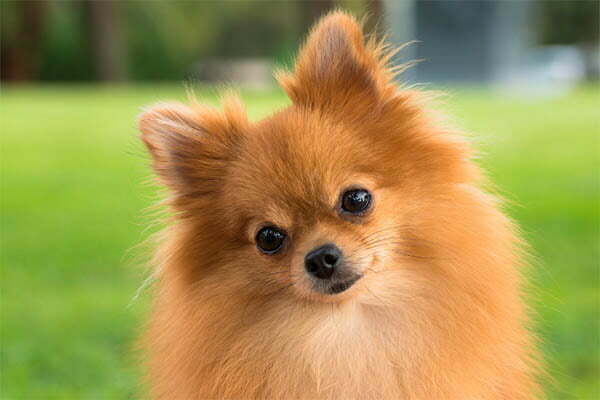
This fluffy, fox-faced dog has sat on the laps of royalty but is now happy in a family home. Queen Victoria owned a particularly small Pom, which made the breed immensely popular, particularly the smaller dogs.
In fact, over Queen Victoria’s lifespan, the Pomeranian breed became half as small as it had originally been!
Pomeranians are originally from northern Poland, but they are now popular worldwide. They are one of the most popular small breeds, having been owned by celebrities like Paris Hilton, Sharon Osbourne, and Sylvester Stallone.
Their popularity could be down to the fact that they have the most color variations of any other breed. You can have Poms in black, brown, blue, red, orange, cream, sable, black and tan, brown and tan, spotted, brindle, and parti, as well as mixtures of those colors.
Breed Group: Toy
Lifespan: 12 – 16
AKC Popularity Ranking: 23 of 197
Australian Shepherds
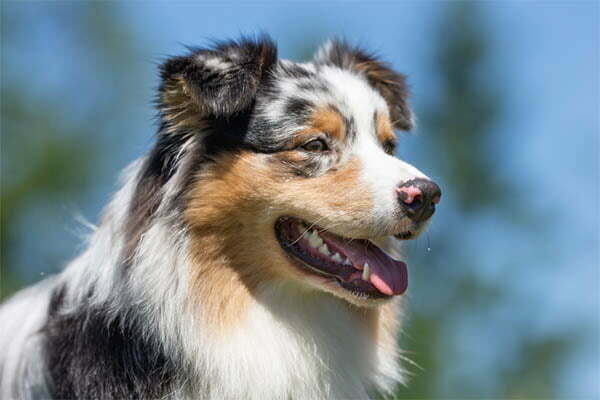
Despite being called an Australian shepherd, this breed was actually created and perfected in California. It does descend from Australian sheepdogs, however.
The Australian shepherd is a common site on ranches, farms, and in rodeos. They are the cowboy dog and are strongly associated with that way of life.
Originally bred to herd sheep, these dogs are successful cattle and livestock herders as well. They are blindingly intelligent, which means they learn commands and protocols incredibly quickly.
Australian shepherds are known for their distinctively patterned coats. Each coat is different from the last, thanks to the beautiful merle patterns.
The jowls, gums, and roof of the mouth are often black or spotted black, no matter what color the coat is.
Breed Group: Herding
Lifespan: 12 – 15
AKC Popularity Ranking: 17 of 197
American Staffordshire Terrier
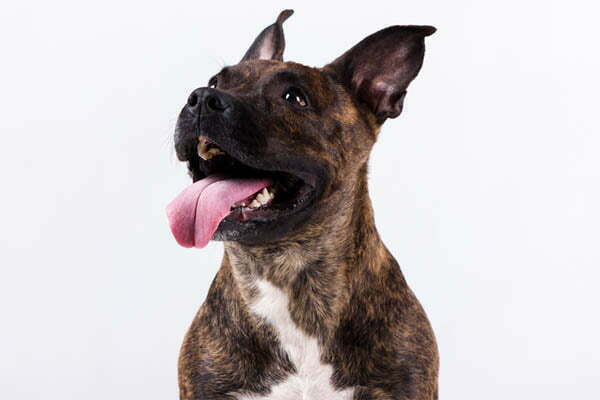
Often known as an AmStaff, this dog is often confused with an American Pit Bull Terrier or a Staffordshire Bull Terrier. While it shares ancestry with both breeds, the AmStaff is a distinct breed of its own.
AmStaffs are often maligned as vicious or threatening dogs thanks to their heavily muscled build and resemblance to Pit Bulls. The truth of the matter is that AmStaffs are confident, good-natured, and loyal dogs who have been unfairly judged.
Though originally bred as fighting dogs, AmStaffs make wonderful companion dogs. They are gentle, loveable, and incredibly faithful pets.
Unfortunately, AmStaffs often feature in breed-restrictive legislation across the world. Again, this is down to prejudice and a few irresponsible owners.
Breed Group: Terrier
Lifespan: 12 – 16
AKC Popularity Ranking: 85 of 197
Dalmatian
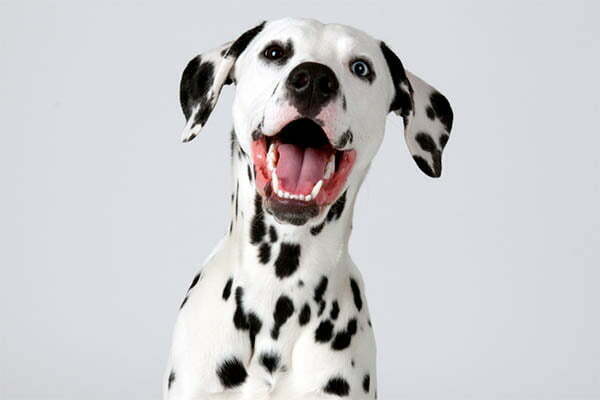
One of the most distinctive-looking dogs, Dalmatians are well known and loved thanks to their appearances in Disney films and their sweet temperament.
Originating in the Dalmatia region of Croatia, these dogs were thought to have been bred from spotted Great Danes and European pointer dogs. They inherited the tall, lanky gait of the Danes but the lithe and athletic body of the pointers.
Originally used as gun dogs, war dogs, and guard dogs, Dalmatians soon found a unique role in Croatian society. They became known as spotted carriage dogs as they could often be seen trotting alongside the carriages of the rich and powerful as a status symbol.
Eventually, Dalmatians entered the fire service first as escorts and then as mascots.
Their time as carriage dogs had made Dalmatians calm and compatible with horses. This made them perfect candidates to escort and protect the horses that pulled the fire carts.
Nowadays, they are often kept as firehouse mascots and family pets. They are intelligent dogs that enjoy lots of exercise and stimulation.
Unfortunately, Dalmatians are prone to a wide range of health problems, including deafness, hip dysplasia, and hyperuricemia.
Breed Group: Non-sporting
Lifespan: 11 – 13
AKC Popularity Ranking: 56 of 197
Staffordshire Bull Terriers
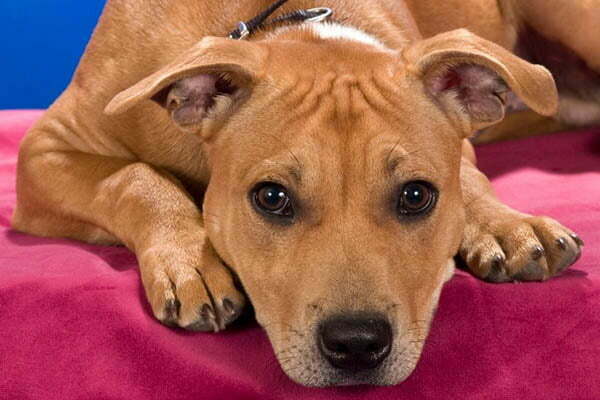
Bred in Birmingham, England, Staffies were originally used as fighting or bull-baiting dogs. They were designed to be smaller and lighter than the original bulldogs from which they were bred.
When bullbaiting and dog fighting was outlawed, the Staffie found a warm and comfortable place in the home.
Staffies are cuddly, sociable, and loveable dogs. They look tough and burly, but in reality, they just want to please. Extremely partial to belly rubs and head pats, Staffies frequently rest close to the top of the popularity lists in the UK, Australia, and New Zealand.
Unfortunately, because of their resemblance to Pit Bulls and the actions of a few unscrupulous owners. Staffies are often subject to breed-specific legislation.
Breed Group: Terrier
Lifespan: 12 – 14
AKC Popularity Ranking: 80 of 197
German Shepherd
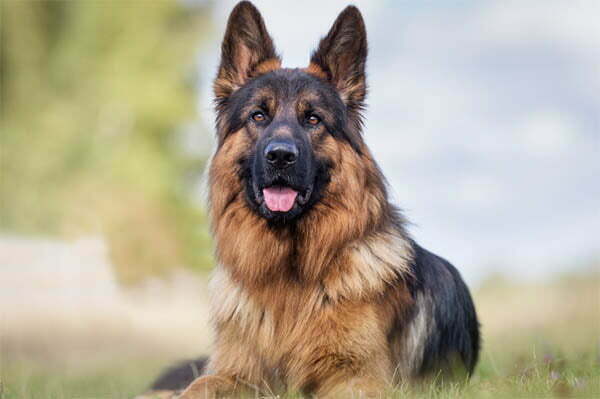
Thought of as one of the best all-rounders, the German shepherd is the second most popular breed in America.
They are incredibly intelligent dogs that can be trained to do a wide range of different jobs. They are frequently used as police dogs, war dogs, assistance dogs, and search and rescue dogs. This is quite a far cry from their original role as sheep-herding dogs!
Normally seen in tan and black or red and black, the breed actually has quite a few color variations, including all-black, all-white, and silver. All color variations typically have black jowls and gums. Most German shepherds also have black roofs of the mouth.
Breed Group: Herding
Lifespan: 12 – 14
AKC Popularity Ranking: 2 of 197
Portuguese Water Dogs
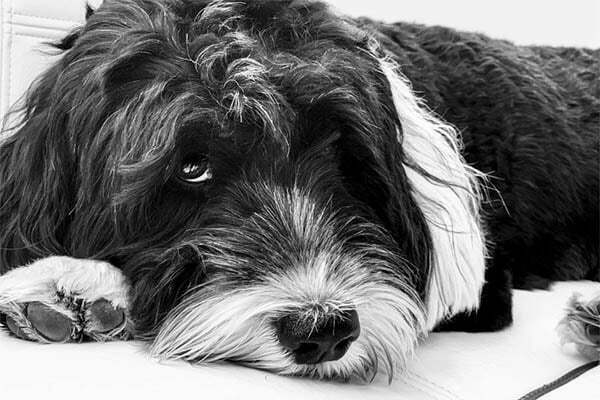
This mass of beautifully tumbling curls comes from the Algarve in Portugal. There, they were bred and trained to herd fish into fishermen’s nets as well as to find and retrieve tackle and nets.
These dogs are quite rare in the US, although their popularity surged after former president Barack Obama made them his dog of choice. Bo and Sunny were firm favorites with White House guests and staff alike.
Closely related to poodles, Portuguese water dogs are designed from head to toe for water. They have webbed feet, strong legs, and warm fur.
If left unattended, their fur will continue to grow as these dogs don’t shed. They, therefore, need to be trimmed regularly. Often, they are given a lion cut which sees their back half shaved with the head and front part of the body long.
This was thought to help the dogs swim better and adapt to the shock of cold water.
Breed Group: Working
Lifespan: 11 – 13
AKC Popularity Ranking: 50 of 197
Doberman Pinscher
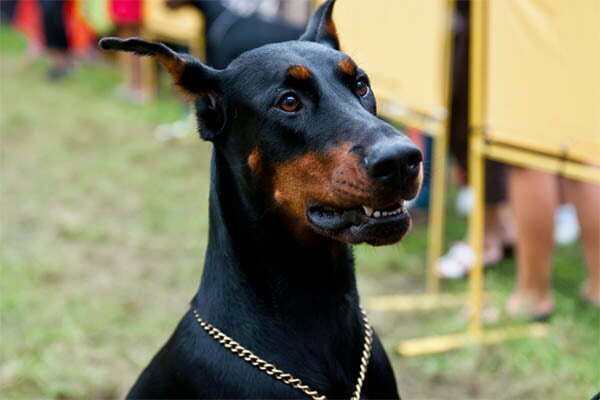
Fearless, alert, and incredibly loyal, Doberman pinschers have a long and illustrious history as guard dogs. They were bred by a German tax collector who wanted a protection dog. Since then, they have been kept by law enforcement, the military, and homeowners as guard dogs.
During world war II, the Doberman pinscher was adopted by the US Marine Corps as their official war dog. That boosted the Doberman’s popularity back home.
Dobermans are incredibly intelligent, making them easy to work with and train. With the right socialization and training, Dobermans can be content and happy as pets. They are loyal and protective toward their owners, but they tend to be fussy about strangers.
Breed Group: Working
Lifespan: 10-12
AKC Popularity Ranking: 17 of 197
Akita
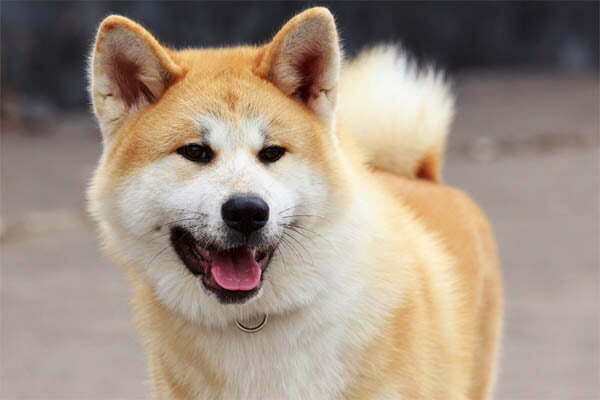
Originating in the northern, mountainous regions of Japan, the Akita is a rugged and robust dog. It is a beautiful, double-coated dog with an incredibly long history.
Found in Japan before the 1600s, the Akita was used to hunt Elk, Bears, and boar. Between 1500 and 1800, Akitas were kept as faithful companions by samurai.
They have been used by the Japanese military for centuries as guard dogs and war dogs, thanks to their courageous and superbly loyal personalities.
Probably the best-known Akita of all time is Hachiko. Born in 1923 and owned by a Tokyo professor, Hachiko walked his owner to the Shibuya Train Station every morning. He would return at the end of the day to collect his owner.
When Hachiko’s owner died of a brain hemorrhage at work, Hachiko continued to wait for his master to come home. Every day for the next 9 years, Hachiko would travel to the station and wait.
Breed Group: Working
Lifespan: 10 – 13
AKC Popularity Ranking: 47 of 197
Shar-Pei
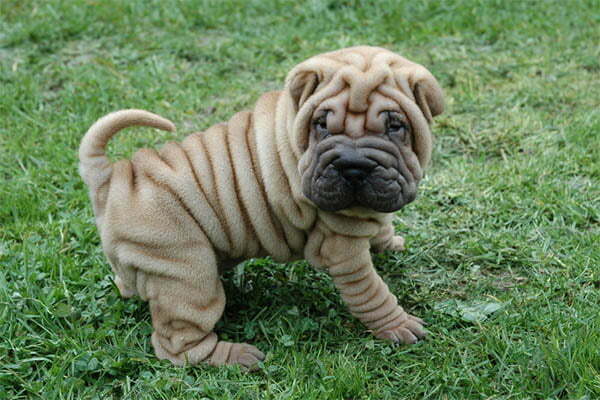
Shar-Peis are well known for their loose, wrinkly skin, which sets them apart from other dogs. The wrinkles were originally smaller and less pronounced. However, modern breeders have, since the 1970s, taken to increasing the wrinkles.
Originally thought to have been used as guard dogs in China, the Shar-Pei was being used as a fighting dog in the 19th century. It was incredibly popular in China until the 20th century, when turmoil and unrest left the breed fighting for existence.
After being named as the rarest dog in the world in 1978, a concerted global preservation effort has seen the Shar-Pei thrive.
Breed Group: Non-sporting
Lifespan: 8 – 12
AKC Popularity Ranking: 64 of 197
Shiba–Inu

These beloved dogs have found fame as a popular internet meme. They’ve even spawned cryptocurrencies that are becoming increasingly popular and valuable!
With a fox-like face and distinctly curled tail, these Japanese dogs are adorable, loveable pets.
Shiba Inus are often described as cat-like thanks to their penchant for keeping themselves clean. They often like to lick their paws and legs and are easy to housebreak.
Breed Group: Non-sporting
Lifespan: 13 – 16
AKC Popularity Ranking: 44 of 197
Irish Setter
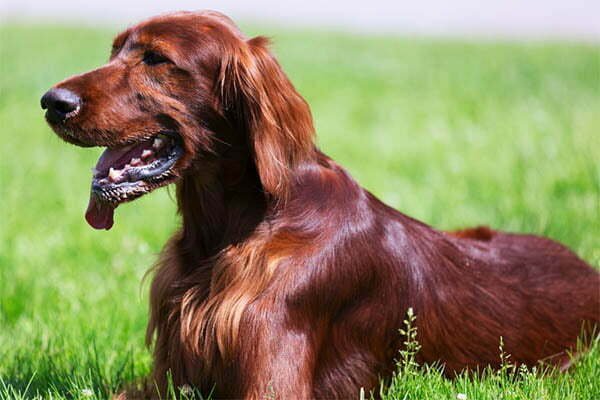
A beautiful red-coated gun dog, the Irish setter is dignified, athletic, and extremely loving. They make wonderful family pets as well as accomplished hunting dogs.
They are highly intelligent dogs but do tend to feign deafness. This means that you need to rigorously train and work with them if you’re going to see results.
Breed Group: Sporting
Lifespan: 12 – 15
AKC Popularity Ranking: 77 of 197
Bullmastiff
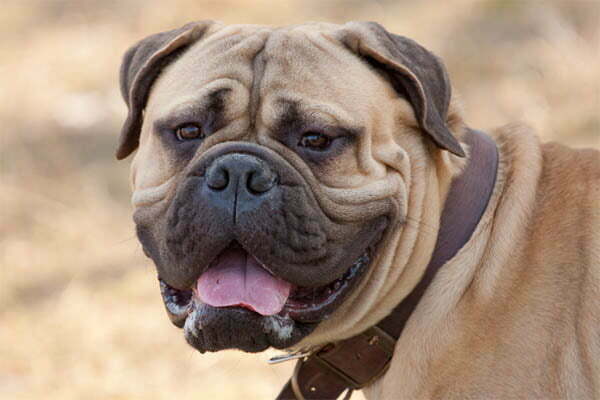
A muscled, broad, and beefy dog, the bullmastiff was bred by gamekeepers to guard country estates.
They are a brachycephalic breed meaning they have a flatter face and shortened muzzle, similar to pugs. Bullmastiffs are generally healthier than Pugs in terms of breathing issues because their muzzle is not so flattened.
Bred as a guard dog designed to catch and pin poachers, bullmastiffs are naturally protective of their families and homes.
Breed Group: Working
Lifespan: 7 – 9
AKC Popularity Ranking: 51 of 197
Newfoundland
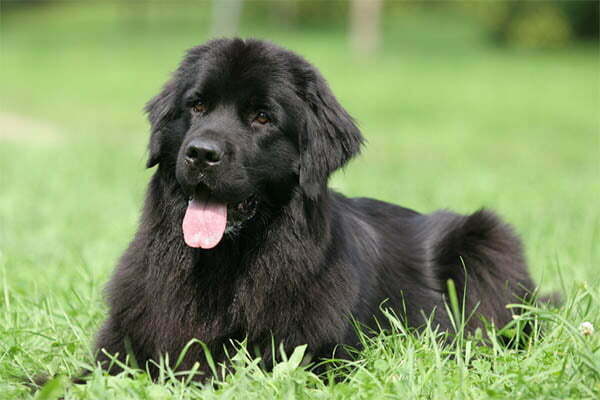
Despite their enormous size, Newfoundland dogs are exceedingly gentle and kind.
They make patient and attentive nanny dogs for children and loveable pets.
Originally bred on the Canadian island of Newfoundland, these massive dogs were designed to be fishermen’s dogs.
They have webbed paws, strong bones, and thick double coats to keep them warm.
Breed Group: Working
Lifespan: 9 – 10
AKC Popularity Ranking: 40 of 197
Black Russian Terrier
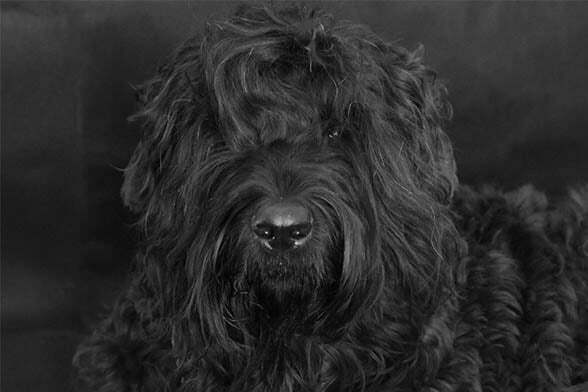
These dense, black-coated dogs aren’t real terriers despite their name. They were bred in Russia as military dogs from lots of different breeds, including Airedales, Newfoundlands, and Rottweilers.
They were bred more for their ability to work rather than their looks which is why their temperament is of the utmost importance.
They must be calm, confident, and self-assured. Their temperament makes them easy to train and excellent family pets. Females are particularly good with children.
Breed Group: Working
Lifespan: 10 – 12
AKC Popularity Ranking: 118 of 197
Komondor
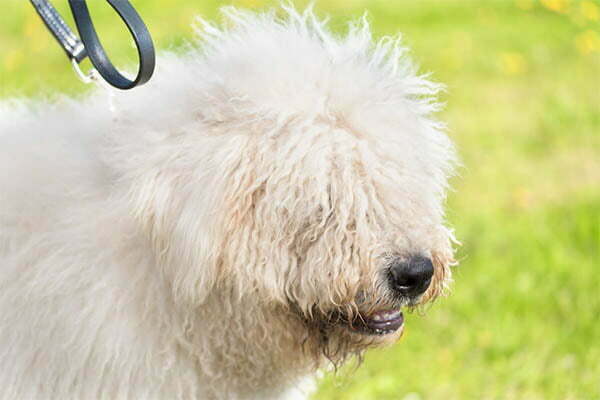
While it might be hard to spot the Komondor’s mouth under their mop-like locks, these dogs do indeed have black gums.
Hailing from Hungary, the Komondor has a long, corded coat. The cords form naturally but need to be separated frequently so that the dog doesn’t become one big mat.
Used as livestock and sheep guardians, these dogs are independent and fiercely protective. They need a firm hand when it comes to training.
Breed Group: Working
Lifespan: 10 – 12
AKC Popularity Ranking: 173 of 197
Puli

Another mop-like dog, this breed is also Hungarian in origin. Unlike the Komondor, which only comes in white, the Puli can have a black, white, gray, or cream coat.
Pulis are smaller than Komondors but just as active. They need plenty of mental stimulation and exercise to be happy and healthy.
Breed Group: Herding
Lifespan: 10 – 15
AKC Popularity Ranking: 160 of 197
